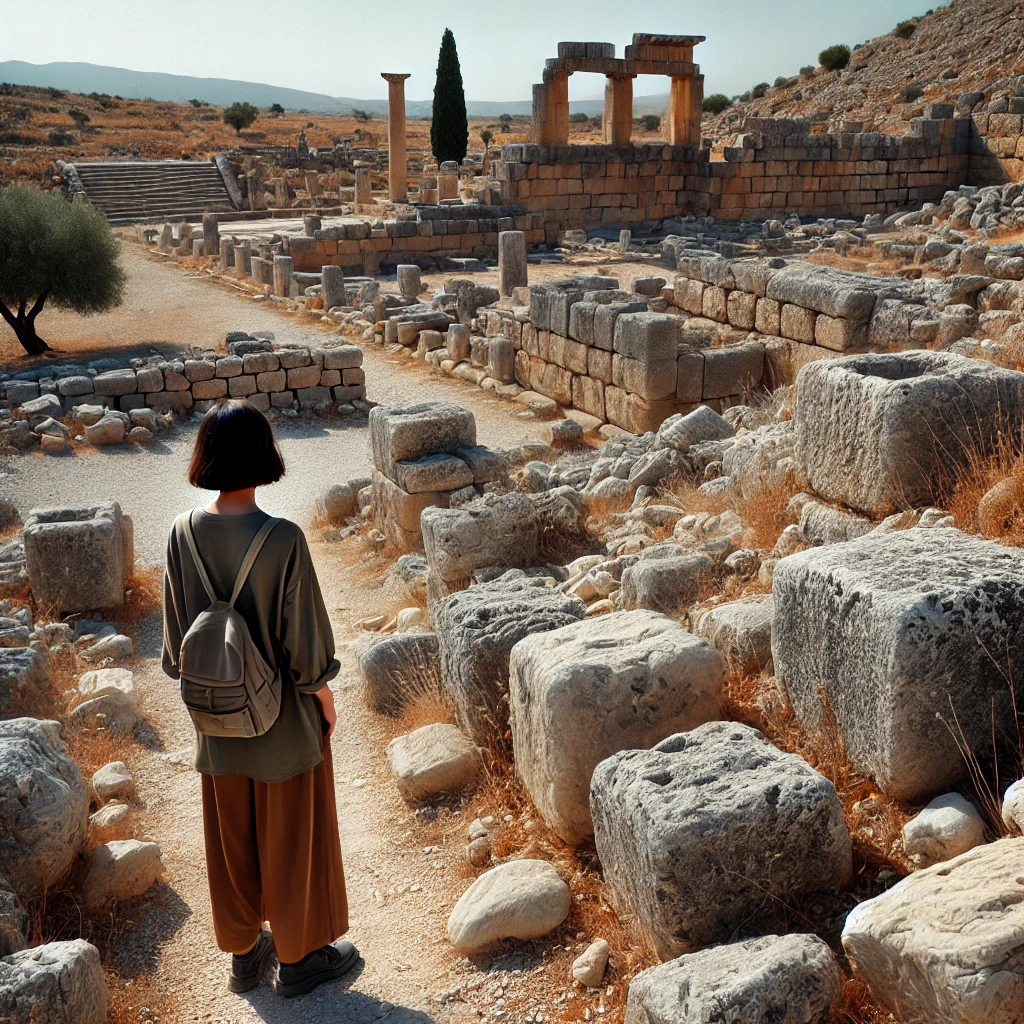ChatGPT:
Dara Ancient City, located near Mardin in southeastern Turkey, is a historically significant archaeological site that offers a glimpse into the Byzantine Empire’s power and infrastructure. It was once a thriving military and trade hub and is renowned for its well-preserved ruins and underground structures.
Origins
Dara was founded in 506 AD during the reign of the Byzantine Emperor Anastasius I. Its construction was strategic, as it served as a fortress city to protect the empire’s eastern borders from the advancing Sassanid Persians. The city was named Anastasiopolis in honor of the emperor and became a key part of the Byzantine defense system.
Historical Significance
• Military Importance: Dara was heavily fortified with thick city walls, towers, and a moat, making it one of the most formidable defensive structures of its time. It served as the primary Byzantine stronghold in Mesopotamia and was critical during the Byzantine-Sassanid wars.
• Economic Role: Positioned on major trade routes, Dara also became an important economic and trade center, facilitating commerce between the East and the West.
• Cultural Significance: As a bustling city, Dara had a diverse population, including Byzantines, Persians, and locals, contributing to a rich cultural blend.
Development
Dara flourished during the 6th century and included advanced infrastructure:
• Hydraulic Engineering: The city is renowned for its intricate water management system, including underground reservoirs, tunnels, and canals to supply water to the population and sustain agriculture.
• Urban Design: The city had well-planned streets, public baths, cisterns, and granaries, showcasing Byzantine engineering and architectural sophistication.
• Necropolis: One of the most striking features of Dara is its extensive necropolis, including rock-carved tombs and underground burial chambers.
Decline
The city faced repeated attacks during the Byzantine-Sassanid conflicts and eventually fell to the Sassanids in the early 7th century. Although it was later recaptured by the Byzantines, Dara gradually lost its strategic and economic significance. By the time of the Arab conquests in the mid-7th century, the city had largely fallen into decline.
Modern Rediscovery
Archaeological excavations in Dara began in the mid-20th century and continue to this day. These excavations have uncovered a wealth of artifacts, underground structures, and architectural marvels, making Dara one of Turkey’s most impressive ancient sites. Visitors can explore:
• Subterranean cisterns: Massive, cathedral-like chambers used for water storage.
• Fortifications: Remnants of the city’s walls and towers.
• Necropolis: Rock-carved tombs and burial chambers.
Dara Ancient City stands as a testament to the ingenuity and resilience of the Byzantine Empire and remains a fascinating destination for history enthusiasts.
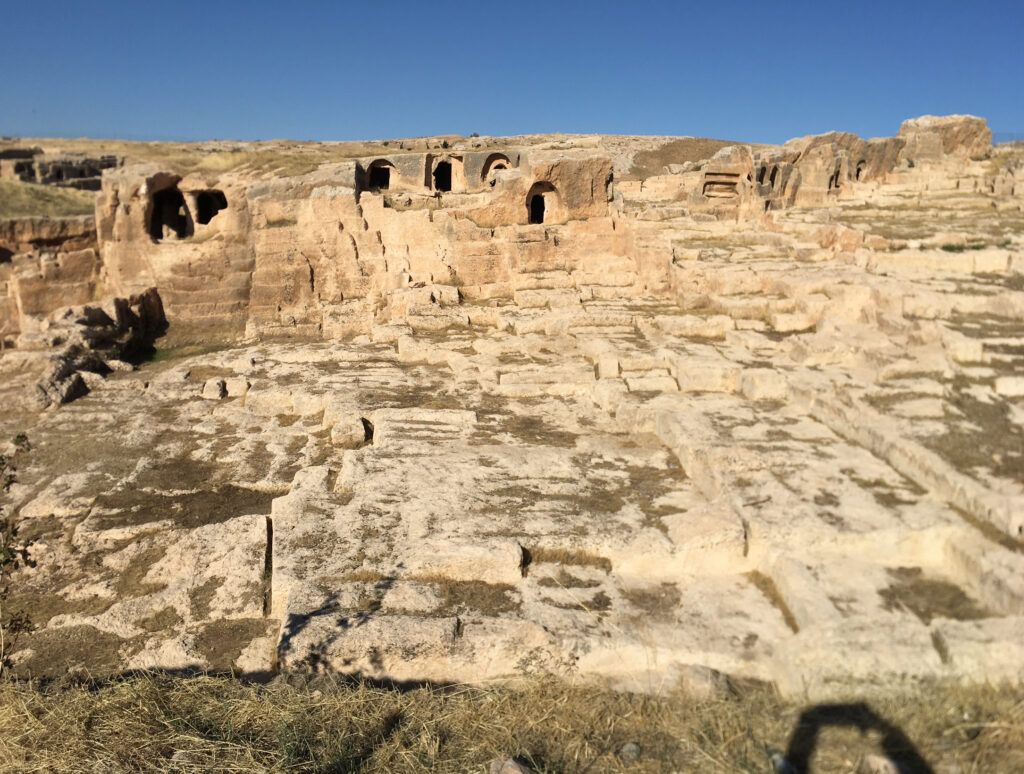
There is some debate about the origins of the cisterns in Dara Ancient City, with suggestions that they may predate the Byzantine period and possibly be Roman in origin. This theory arises from the advanced engineering of the cisterns, which aligns with Roman techniques in hydraulic architecture.
Roman Influence in Dara
• Prior Settlement: Although the city of Dara was officially established by the Byzantines under Emperor Anastasius I in 506 AD, it is likely that the site was already of some importance before this. The Romans were known to utilize strategic locations, and it’s possible that they had a settlement or infrastructure here, which was later expanded and incorporated into the Byzantine city.
• Hydraulic Engineering: The cisterns in Dara reflect Roman expertise in water management, which included the use of arches, vaulted ceilings, and precise calculations to ensure water storage and distribution. The Romans were masters of such systems, and their methods heavily influenced later Byzantine constructions.
Integration into Byzantine Dara
If the cisterns were originally Roman, the Byzantines likely inherited and repurposed them as part of their urban planning. This practice was common in the Byzantine Empire, which often built upon and adapted Roman infrastructure. The cisterns would have been vital for the survival of the city’s population and for sustaining troops during sieges, especially given Dara’s location in a semi-arid region.
Evidence and Debate
• Archaeological Layers: Excavations have uncovered elements of the city’s construction that suggest multiple phases of development, possibly including Roman and later Byzantine contributions.
• Stylistic Features: The architectural style of the cisterns, such as their vaulted ceilings and construction techniques, resembles those found in other Roman sites, but they also align with early Byzantine practices that inherited Roman engineering knowledge.
• Lack of Written Records: There are no definitive Roman-era texts specifically referencing Dara, leaving much of its pre-Byzantine history open to interpretation.
Conclusion
While the cisterns might indeed have Roman origins, their continued use and integration into Byzantine Dara reflect the ingenuity and resourcefulness of both empires. Regardless of their exact origins, the cisterns remain a remarkable example of ancient hydraulic engineering and a highlight of the site’s rich history. Further archaeological study may provide more clarity on this aspect of Dara’s past.
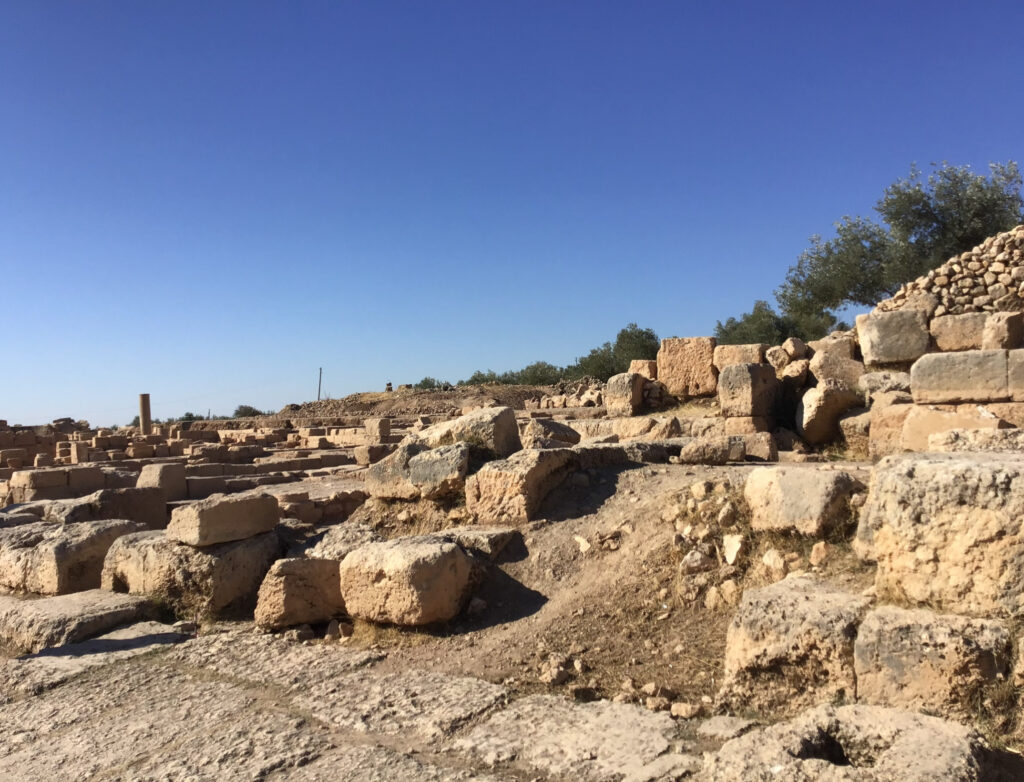
Dara Ancient City boasts several remarkable archaeological sites, showcasing its historical and architectural significance. Here are the most significant:
1. Underground Cisterns
• Description: These vast subterranean chambers, sometimes called “water cathedrals,” were used for storing water. Their scale and engineering make them one of the most striking features of Dara.
• Highlights: The cisterns include vaulted ceilings and arched structures that demonstrate advanced hydraulic engineering, possibly influenced by Roman or Byzantine techniques.
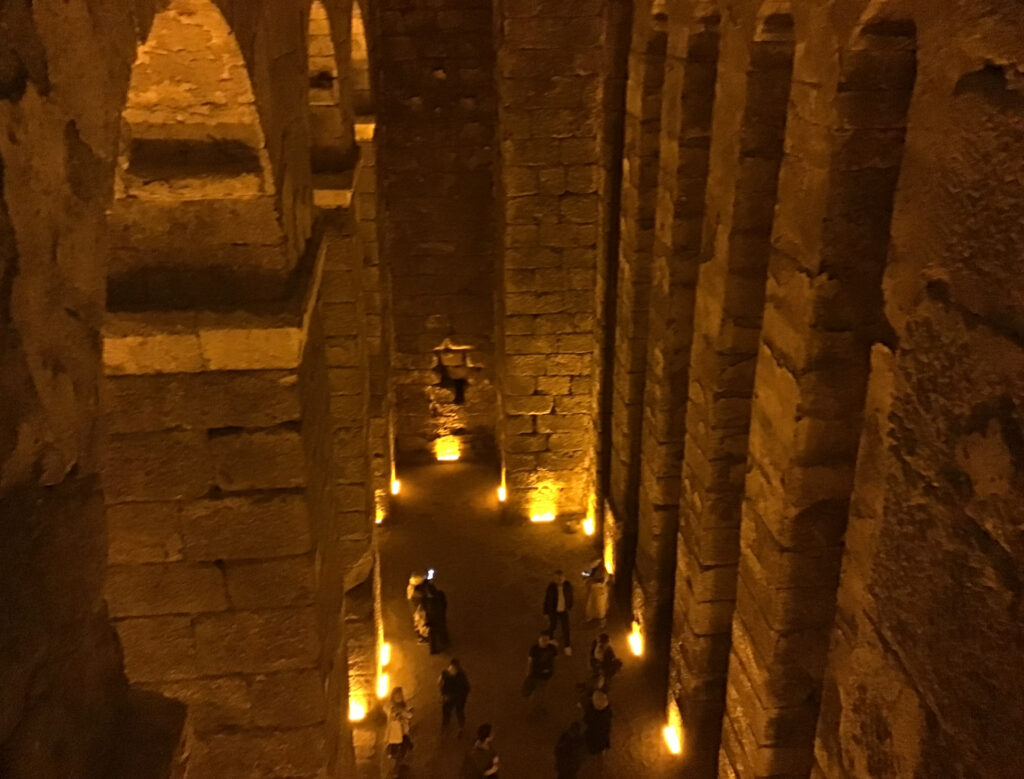
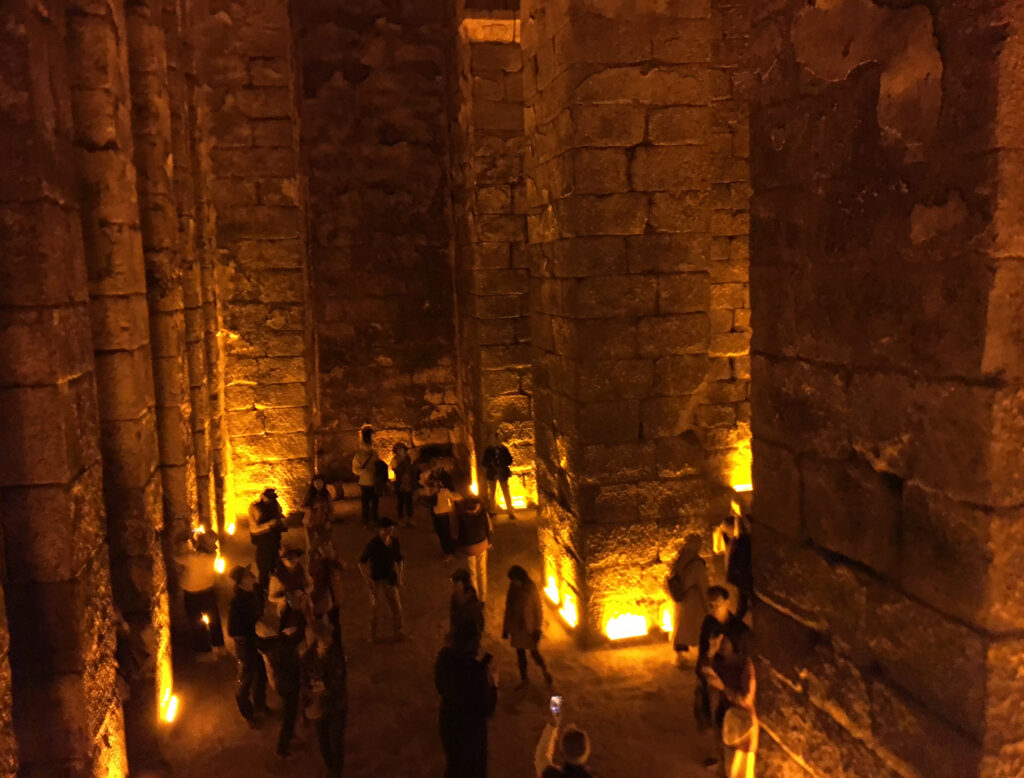
2. City Walls and Towers
• Description: The city’s defensive walls and towers were vital for protecting Dara against invasions. Some remnants of these fortifications are still visible today.
• Highlights: Thick walls with watchtowers and strategically placed gates, reflecting Byzantine military architecture.
3. Necropolis
• Description: Dara’s necropolis is a vast burial area carved into the rock surrounding the city.
• Highlights: Rock-hewn tombs and underground burial chambers, with intricate carvings and designs, provide insight into the funerary practices of the time.
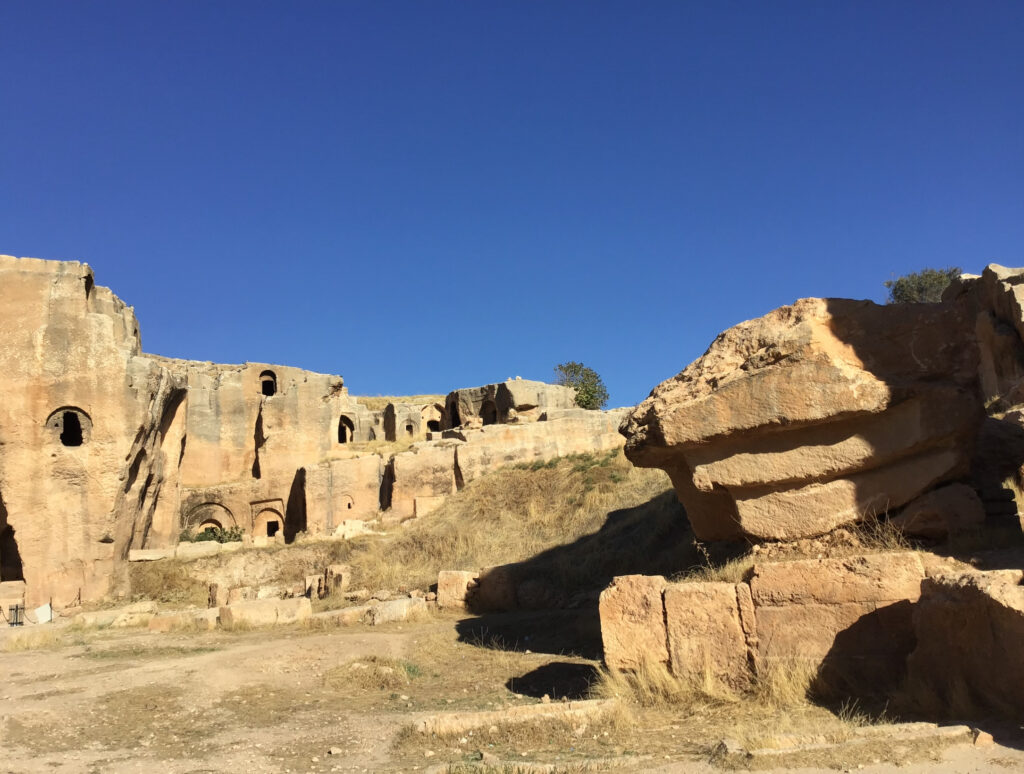
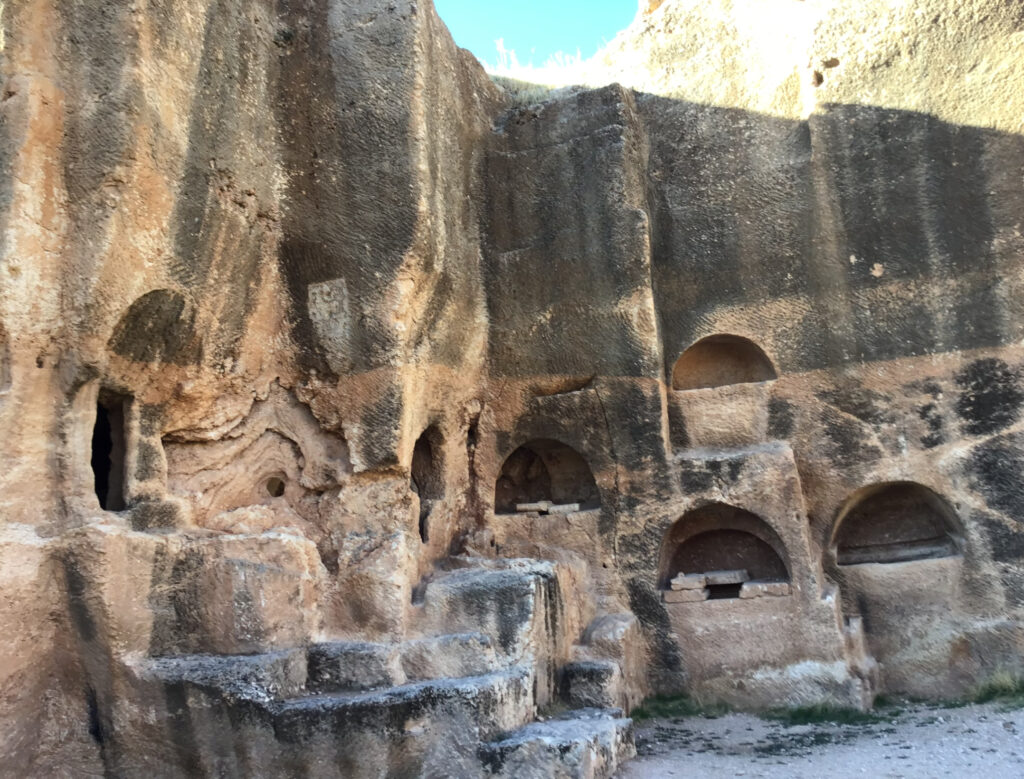
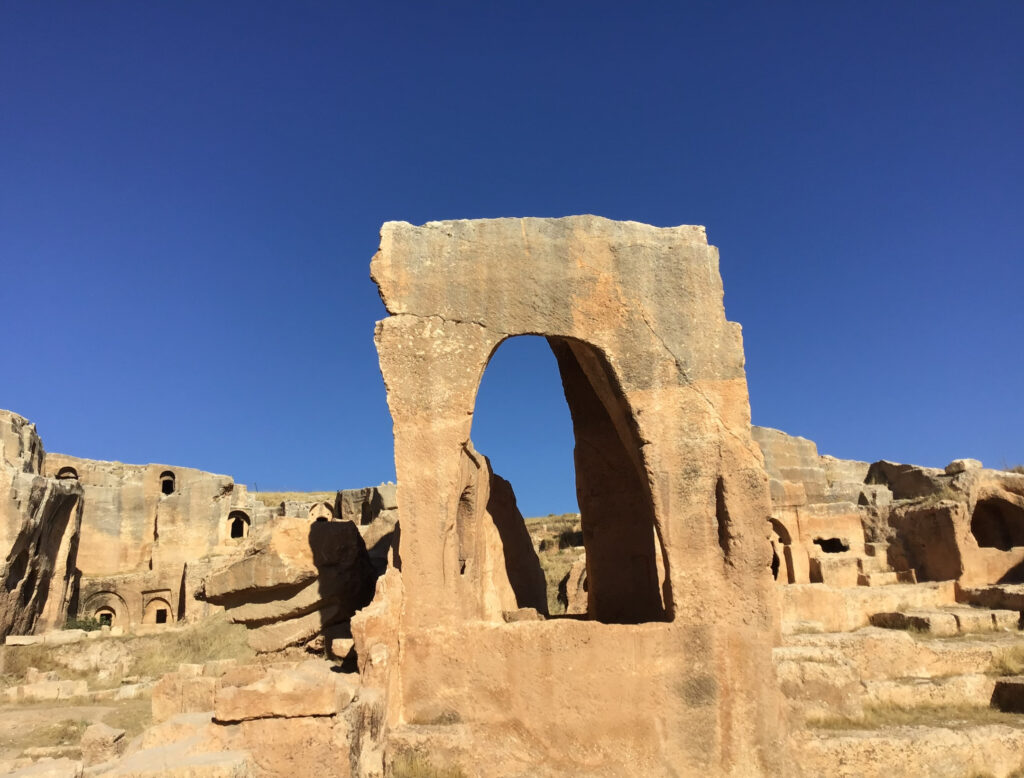
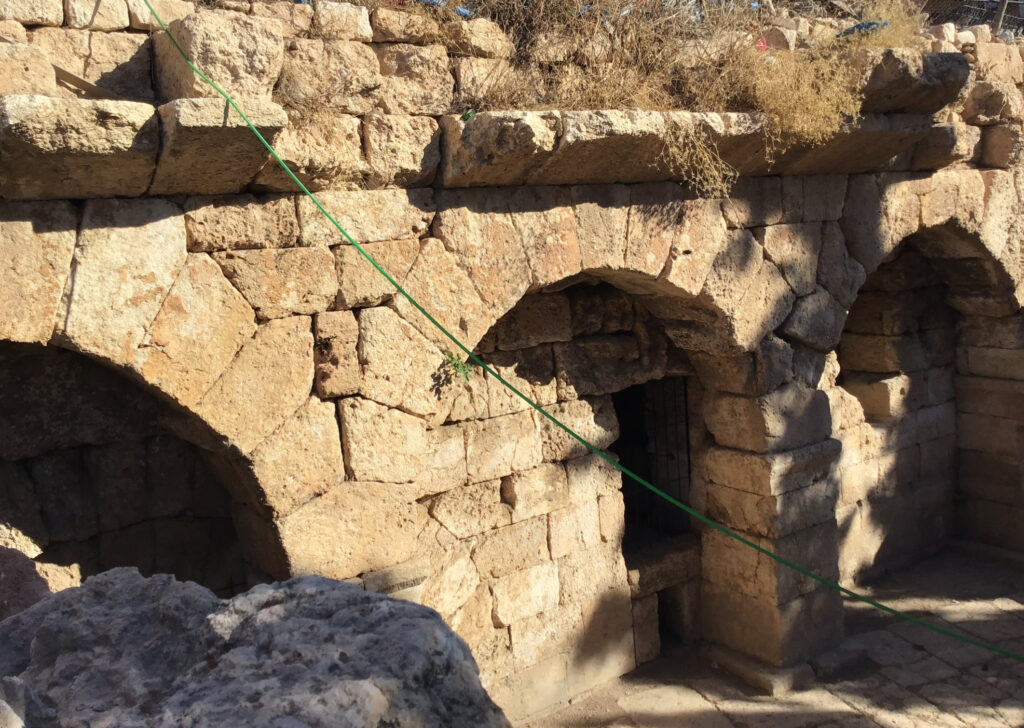
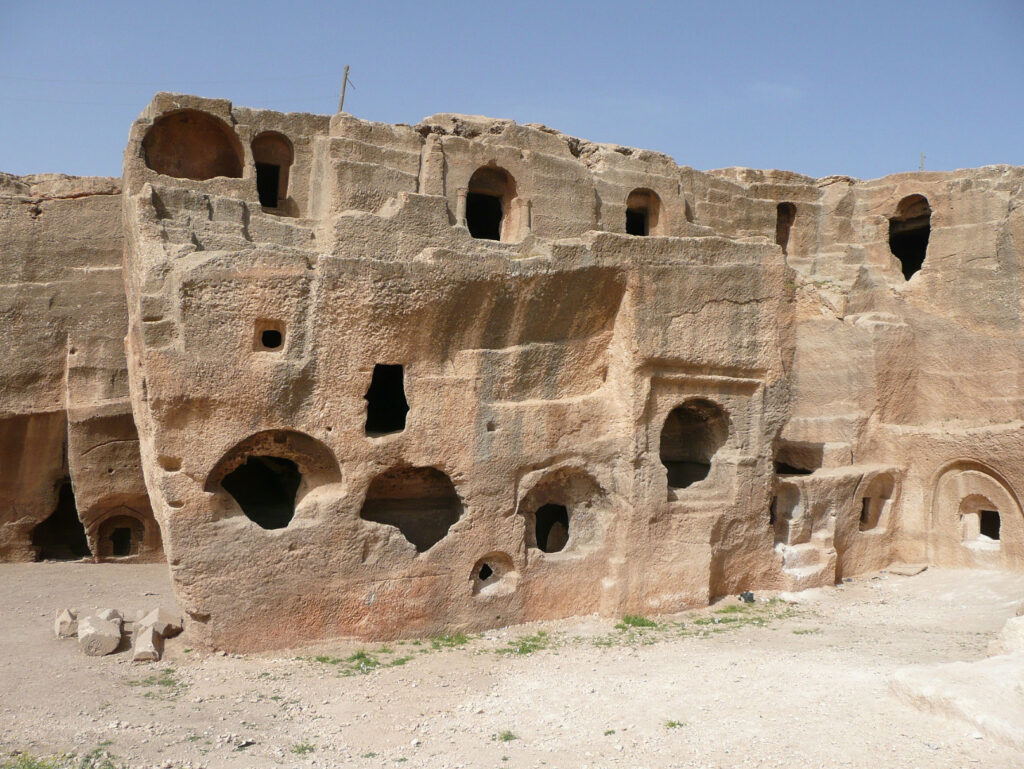
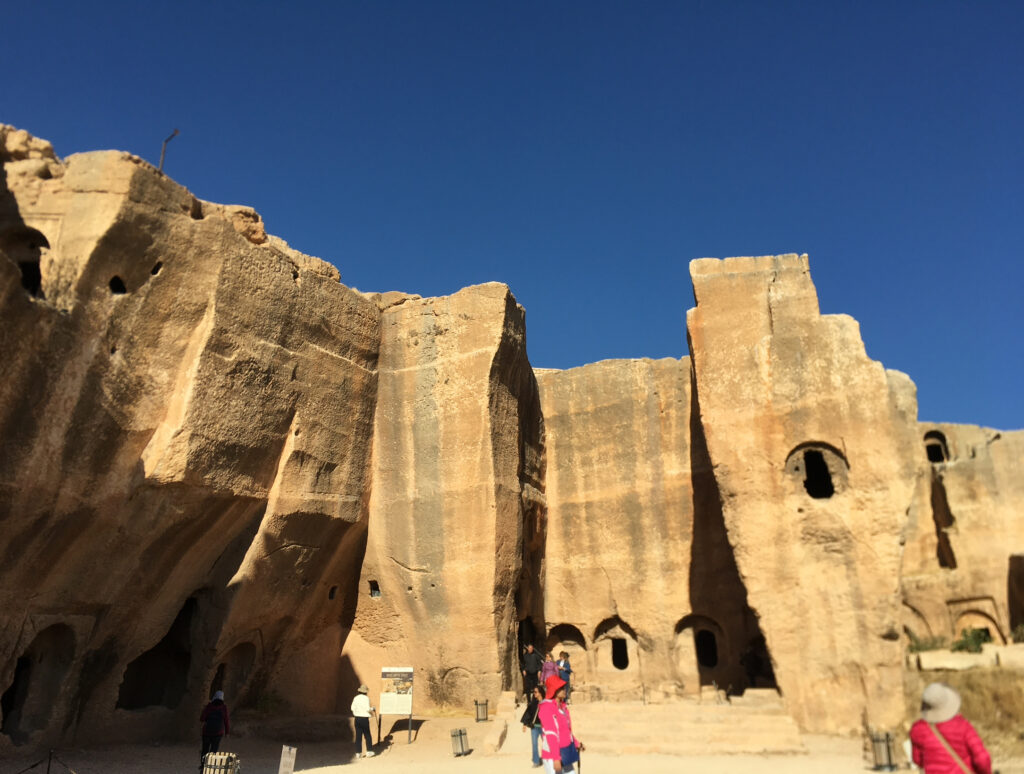
4. Underground Granaries
• Description: These storage facilities were used for preserving grain and other supplies, essential during sieges or droughts.
• Highlights: Ingeniously designed to keep food supplies dry and protected.
5. Roman-Byzantine Amphitheater
• Description: A partially excavated amphitheater that hints at the cultural and social life of the city.
• Highlights: The semi-circular seating and stage area suggest a space for public performances or gatherings.
6. Water Canals and Aqueducts
• Description: These structures were part of the city’s advanced water management system, channeling water to the cisterns and other areas.
• Highlights: The remains of aqueducts and canals showcase the engineering skills of the city’s planners.
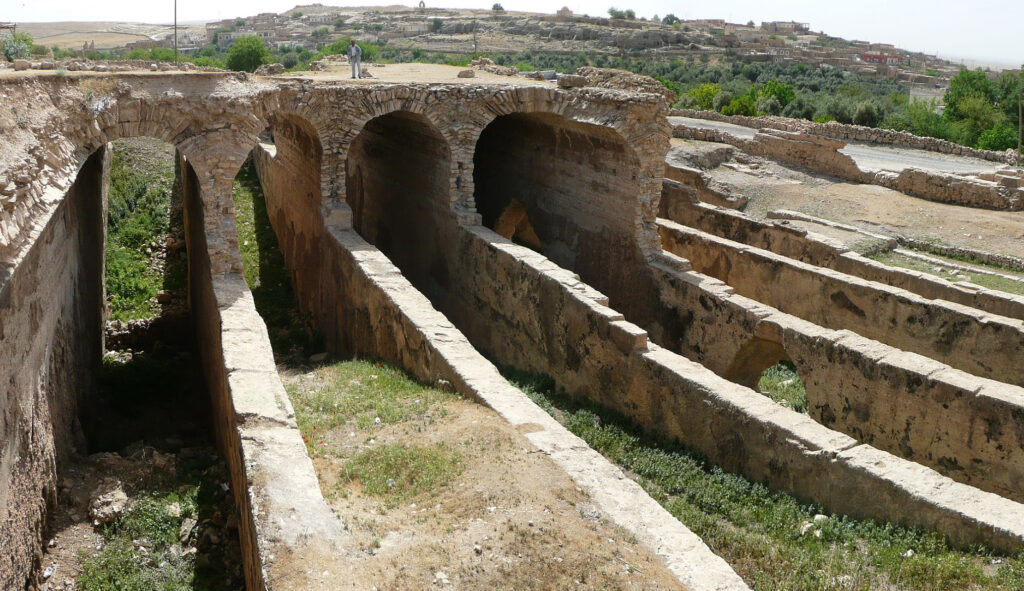
7. Churches and Religious Structures
• Description: The ruins of early Christian churches reflect Dara’s role as a Byzantine city.
• Highlights: Although not fully excavated, these sites offer glimpses into the religious life and architectural styles of the period.
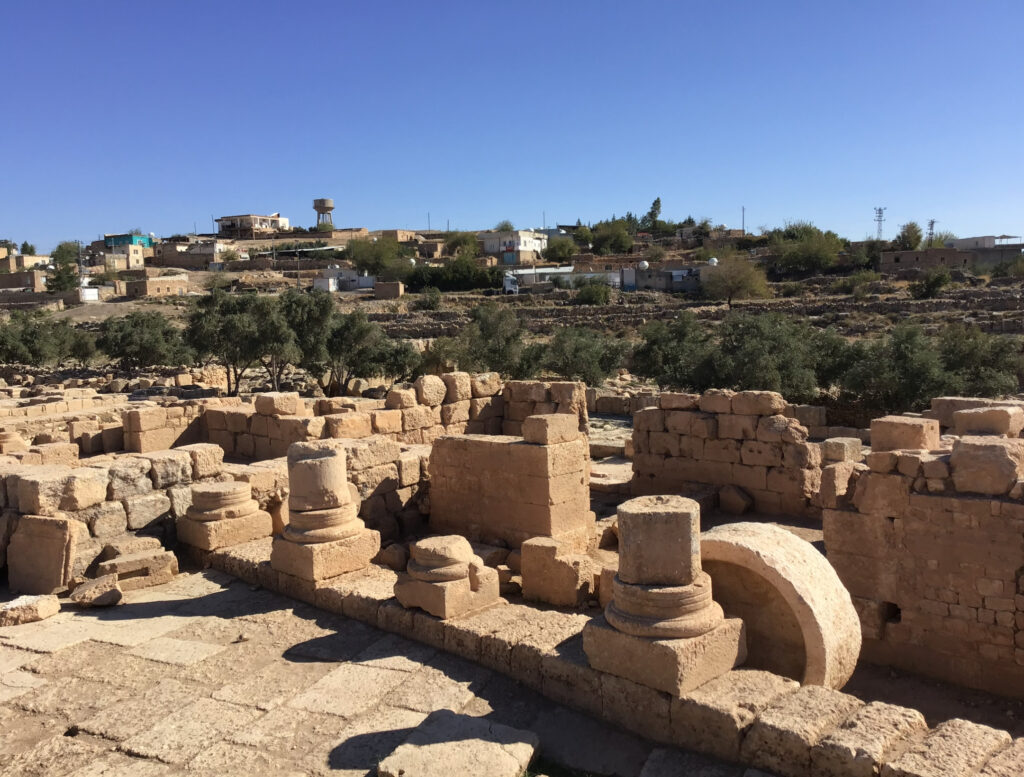
8. Civilian Quarters
• Description: Excavations have revealed residential areas that provide insights into daily life in the city.
• Highlights: Houses, courtyards, and streets, along with artifacts like pottery and tools, paint a picture of life in ancient Dara.
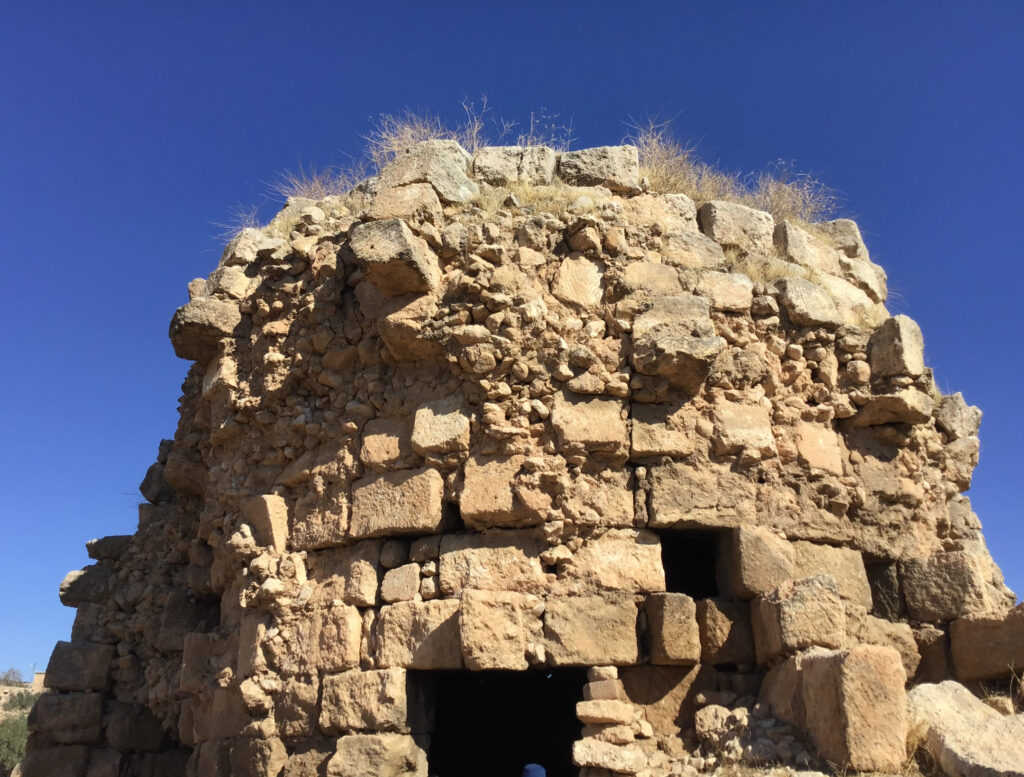
9. Market Area
• Description: Remnants of what is believed to be the city’s marketplace, where trade and commerce flourished.
• Highlights: Foundations of shops and storage facilities, indicating the city’s economic activities.
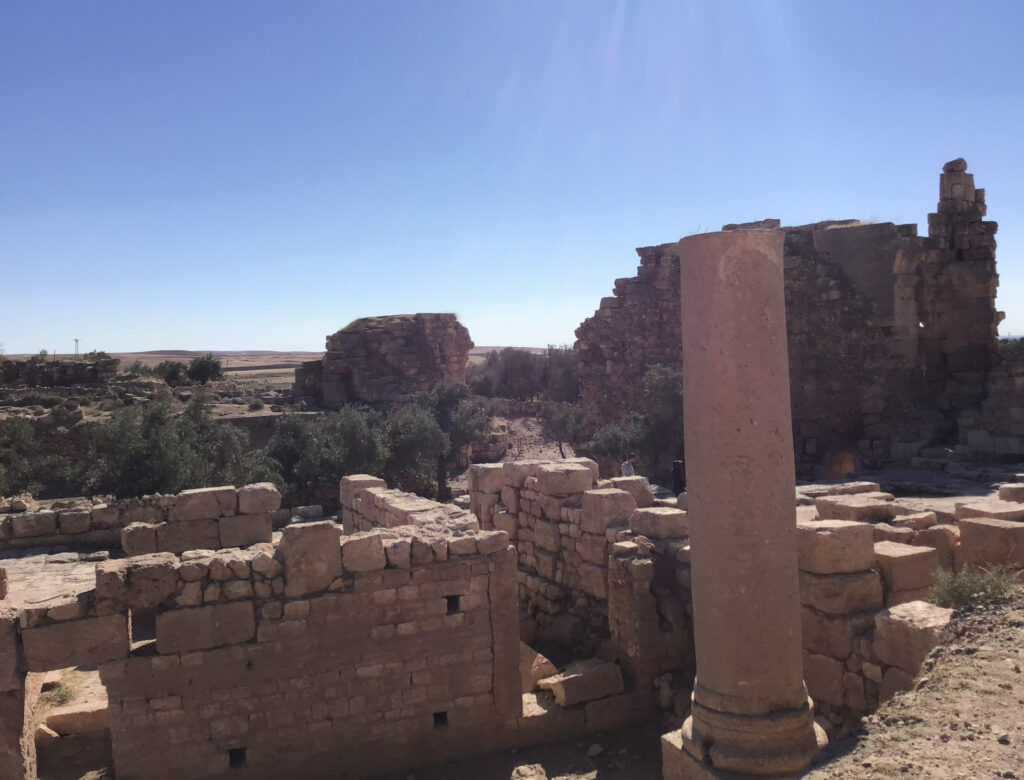
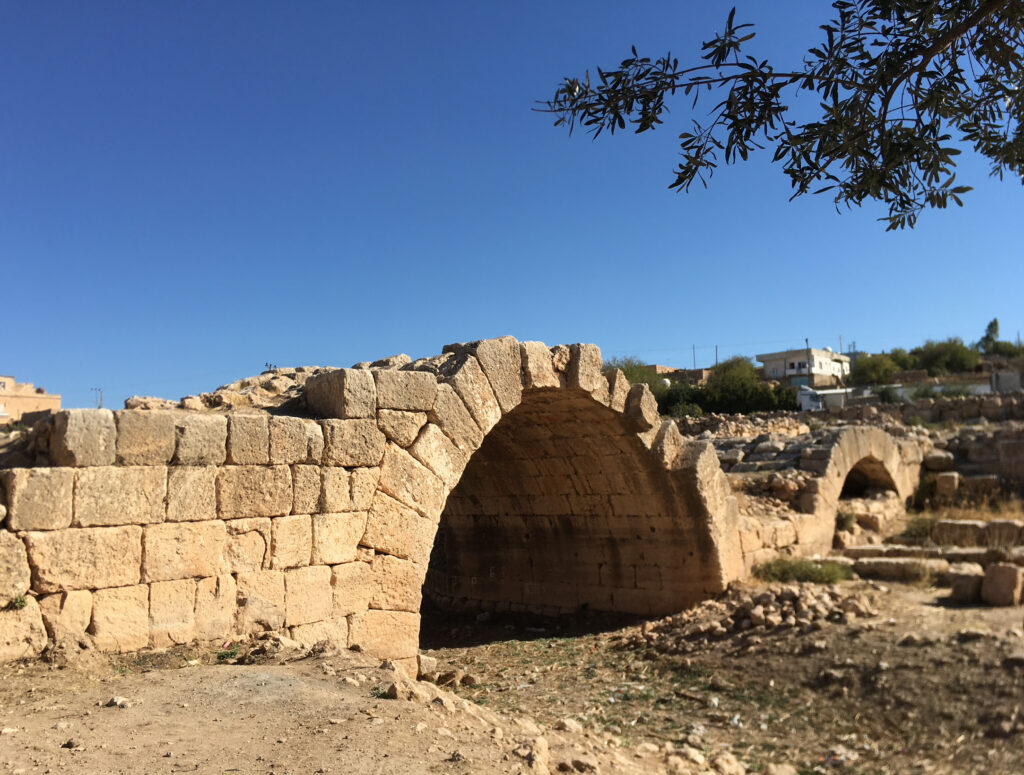
10. Dungeon or Prison
• Description: A structure believed to have been used as a prison or storage facility, located underground.
• Highlights: Its small, confined spaces add to the mystery of its purpose.
These archaeological sites make Dara a fascinating destination for exploring the ingenuity and complexity of ancient civilizations in the region.
